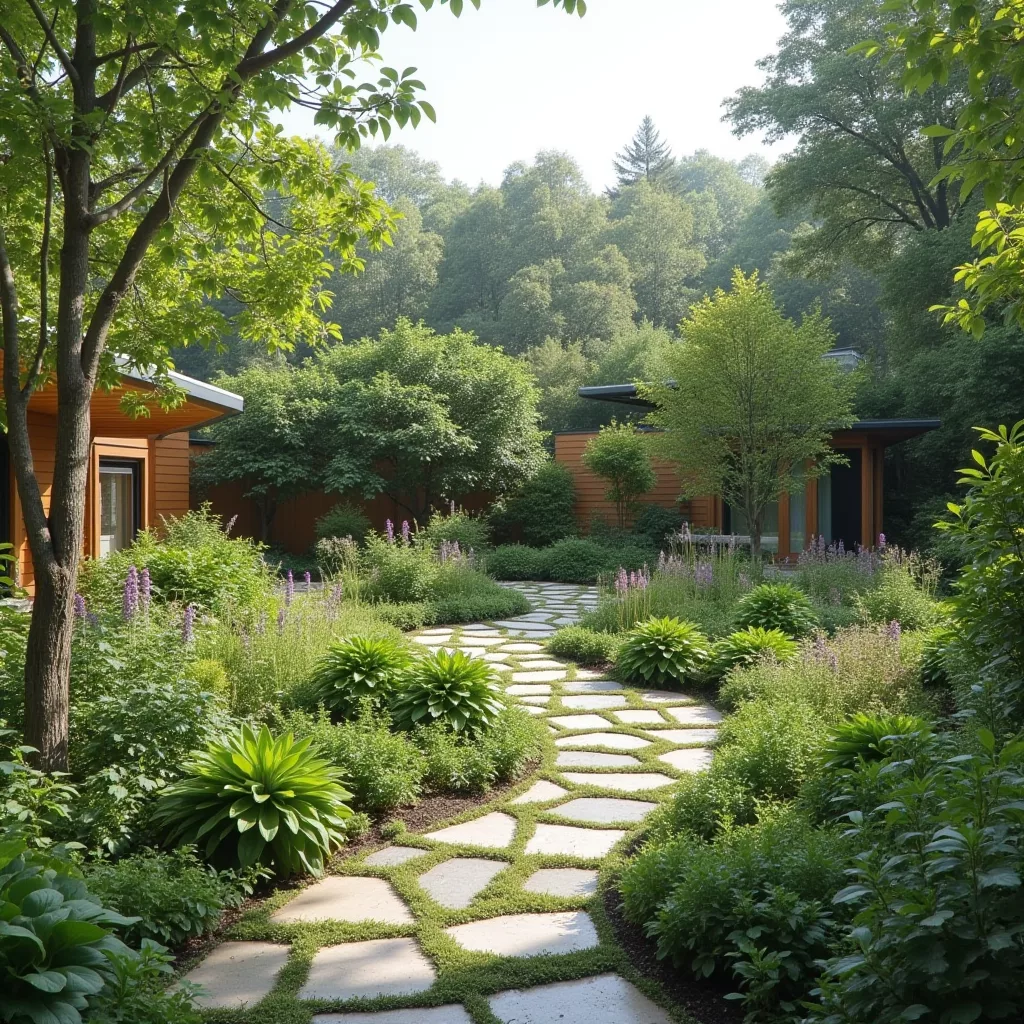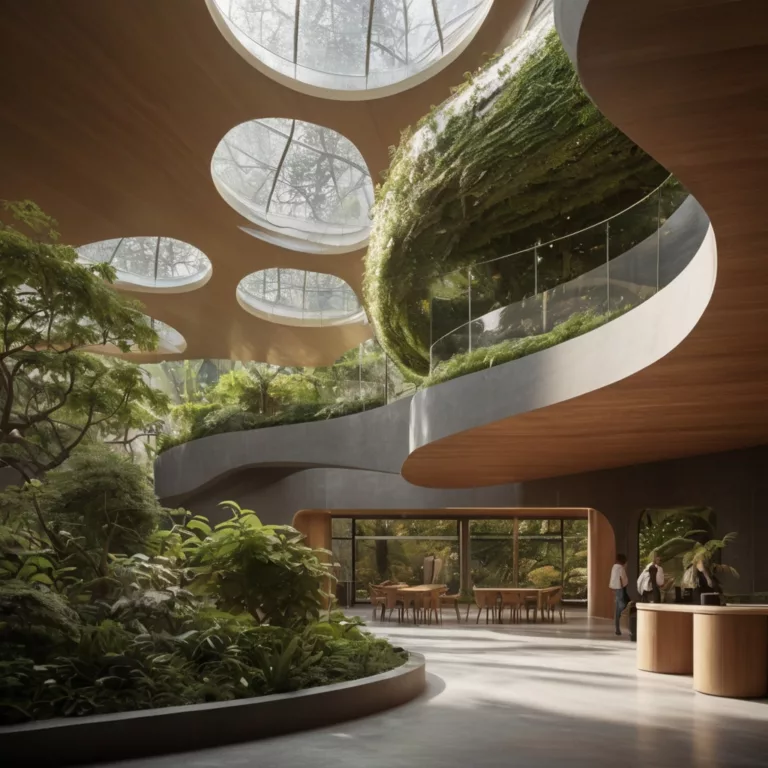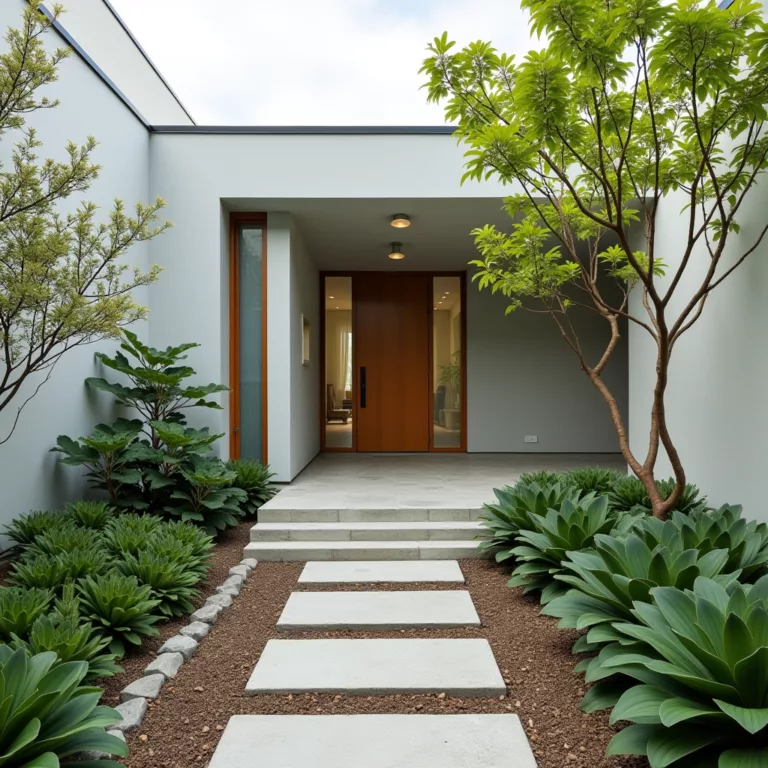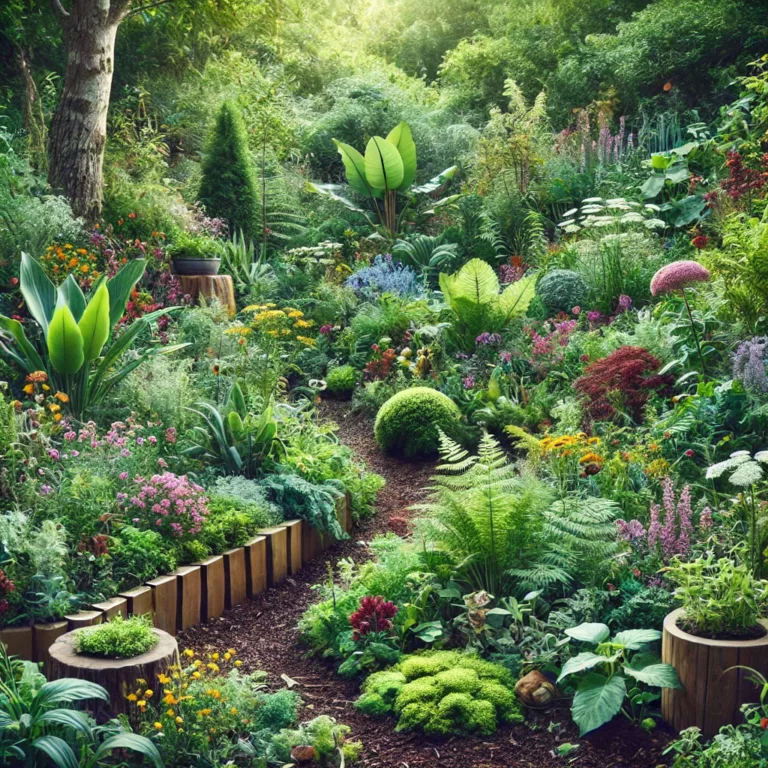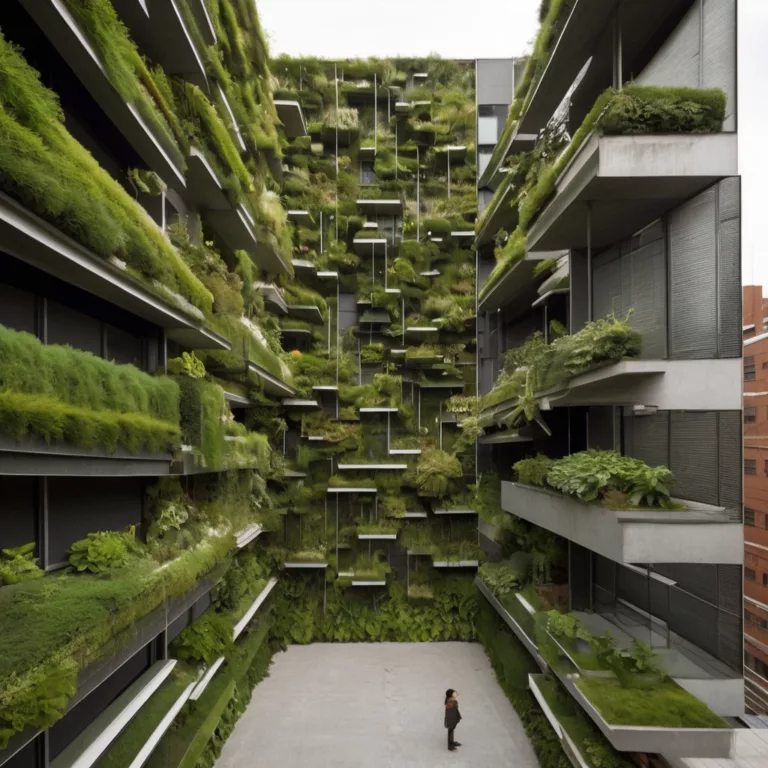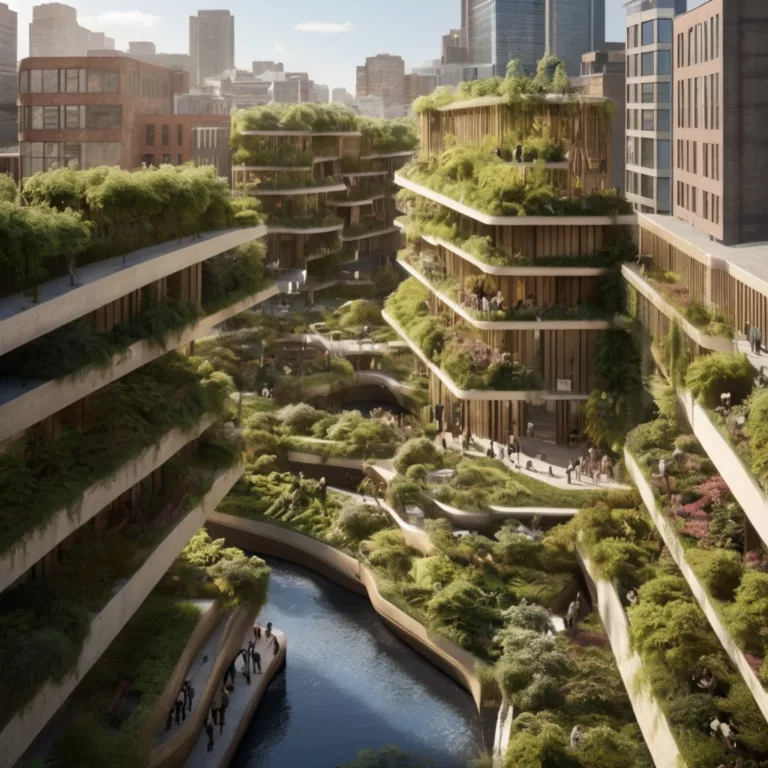Climate-Resilient Garden Design: Cultivating Beauty and Strength in the Face of Environmental Chaos
The Urgency of Gardening for a Changing Planet
As wildfires scorch landscapes, floods drown cities, and heatwaves shatter records, gardens are no longer just spaces of beauty 8they are frontline warriors in the battle against climate change. Climate-resilient garden design is not a trend; it’s a survival strategy. This exclusive, in-depth guide unveils how to create gardens that thrive amid environmental extremes, blending cutting-edge science, ancient wisdom, and artistic innovation. Whether you’re a homeowner, landscape architect, or urban planner, these strategies will empower you to transform vulnerable green spaces into bastions of resilience.
Part 1: Understanding the Climate Challenges
1.1 The New Normal: Extreme Weather Realities
- Heatwaves: By 2050, 75% of global cities will experience temperatures over 35°C (95°F) for 30+ days yearly (World Bank).
- Floods: Urban flooding incidents have surged by 50% since 2000 due to erratic rainfall (UNEP).
- Drought: 25% of the world’s population already faces extreme water stress (WRI).
1.2 How Gardens Can Be Climate Allies
- Carbon Sequestration: A single mature tree absorbs 48 lbs of CO₂ annually.
- Urban Cooling: Green spaces can lower local temperatures by up to 5°C (EPA).
- Stormwater Mitigation: Permeable landscapes absorb 30% more rainwater than concrete (ASLA).
Part 2: Core Principles of Climate-Resilient Design
2.1 Building from the Ground Up: Soil as the Foundation
- Regenerative Soil Practices:
- Biochar Integration: Boost water retention by 20% and sequester carbon for centuries.
- Mycorrhizal Networks: Foster fungal partnerships to enhance plant drought tolerance.
- No-Till Gardening: Preserve soil structure and microbial life to prevent erosion.
- Combatting Soil Salinization: Use salt-tolerant cover crops like barley and saltbush in coastal zones.
2.2 Water-Wise Strategies for Drought and Deluge
- Smart Irrigation Systems:
- AI-Powered Sensors: Tools like CropX analyze soil moisture and weather data to optimize watering.
- Drip Irrigation 2.0: Subsurface systems reduce evaporation by 90% compared to sprinklers.
- Rainwater Harvesting:
- Modular Cisterns: Store thousands of gallons for dry spells (e.g., Rainwater Hog).
- Swales and Bioswales: Redirect floodwater while filtering pollutants with native grasses.
- Greywater Recycling: Systems like Aqua2Use treat household water for irrigation, cutting freshwater use by 50%.
2.3 Windbreaks and Microclimate Engineering
- Living Windbreaks: Plant dense rows of native shrubs (e.g., juniper, elderberry) to reduce wind speed by 80%.
- Heat-Reflective Surfaces: Replace asphalt with light-colored permeable pavers or clover lawns.
- Shade Canopies: Install retractable solar shades or fast-growing trees (e.g., honey locust) to protect delicate plants.
Part 3: The Power of Native Plants
3.1 Why Native Plants Are Climate Champions
- Adaptation: Natives have evolved over millennia to withstand local pests, droughts, and floods.
- Biodiversity Boost: They support 75% more pollinators and birds than non-natives (Audubon Society).
- Low Maintenance: Once established, they require 80% less water and zero synthetic fertilizers.
3.2 Curating a Climate-Adaptive Plant Palette
- For Arid Regions:
- Succulents: Agave, prickly pear, and stonecrop store water in fleshy leaves.
- Deep-Rooted Perennials: Purple coneflower and prairie dropseed access groundwater reserves.
- For Flood-Prone Areas:
- Wetland Species: Swamp milkweed, blue flag iris, and river birch thrive in soggy soils.
- Elevated Mounds: Plant water-sensitive species like lavender on raised berms.
- For Coastal Zones:
- Salt-Tolerant Warriors: Beach plum, seaside goldenrod, and bayberry defy salty sprays.
3.3 Avoiding Invasive Imposters
- High-Risk Species: Replace invasive English ivy with native Virginia creeper or trumpet honeysuckle.
- Climate-Invasive Feedback Loops: Invasives like kudzu worsen wildfires and erosion—opt for alternatives like American wisteria.
Part 4: Sustainable Landscaping Techniques
4.1 Xeriscaping: Beauty Beyond the Lawn
- Zone-Based Design: Group plants by water needs (oasis, transitional, arid zones).
- Rock Gardens: Use heat-absorbing stones paired with sedums and thyme for low-water drama.
- Mulching Mastery: Apply 3-4 inches of gravel or bark mulch to reduce evaporation by 70%.
4.2 Permaculture Principles for Resilience
- Food Forests: Layer fruit trees, shrubs, and groundcovers (e.g., pawpaw, currant, wild strawberry) for self-sustaining yields.
- Companion Planting: Grow drought-tolerant corn with nitrogen-fixing beans and squash (“Three Sisters” method).
- Wildlife Corridors: Connect habitats with native hedgerows to support species migration amid climate shifts.
4.3 Firewise Landscaping
- Defensible Zones: Create a 30-foot buffer around structures with fire-resistant plants like yucca and sedum.
- Hardscaping Barriers: Use stone pathways or dry streambeds to slow fire spread.
- Deciduous Trees: Plant maple or poplar instead of flammable evergreens like pine.
Part 5: Case Studies – Resilience in Action
5.1 The Phoenix Desert Garden (Arizona, USA)
- Challenge: 43°C (110°F) summers, 8 inches annual rainfall.
- Solution: A xeriscape wonderland with palo verde trees, ocotillo, and decomposed granite paths.
- Result: 90% reduction in water use; 50% cooler microclimate than surrounding areas.
5.2 The Floating Gardens of Bangladesh
- Challenge: Monsoon floods submerge 30% of the country annually.
- Solution: Hydroponic “raft gardens” using water hyacinth and rice straw to grow okra and spinach.
- Result: Year-round crops despite inundation; 200% income increase for farmers.
5.3 The Netherlands’ Sand Motor
- Challenge: Coastal erosion from rising seas.
- Solution: A man-made peninsula of 21 million cubic meters of sand, planted with marram grass.
- Result: Natural dune formation protecting 20 km of coastline for decades.
Part 6: Future-Forward Innovations
6.1 CRISPR-Edited Superplants
- Drought-Resistant Crops: Scientists are editing genes in wheat and tomatoes to survive with 50% less water.
- Carbon-Hungry Trees: Fast-growing GM poplars sequester 300% more CO₂ (Salk Institute).
6.2 Solar Synergy
- Agrivoltaics: Pair solar panels with shade-loving crops like lettuce, boosting land efficiency by 60%.
- Solar-Powered Soil Sensors: Devices like Teralytic monitor conditions in real-time, powered by sunlight.
6.3 Mycoremediation Magic
- Fungal Filters: Oyster mushrooms break down pollutants in flood-ravaged soils.
- Mycelium Networks: Underground fungal webs warn plants of pest attacks, triggering natural defenses.
Part 7: DIY Guide to Your Climate-Resilient Garden
7.1 Step-by-Step Soil Revival
- Test Soil: Use a kit to check pH, salinity, and organic matter.
- Amend with Biochar: Mix 10% biochar into topsoil.
- Plant Cover Crops: Clover or buckwheat to suppress weeds and fix nitrogen.
7.2 Planting for Survival
- Hugelkultur Beds: Bury logs under soil to create moisture-rich, nutrient-dense mounds.
- Keyhole Gardens: Circular beds with compost centers for efficient watering.
7.3 Emergency Protocols
- Flood Prep: Elevate compost bins; plant willow stakes to stabilize soil.
- Heatwave Response: Install shade cloth and hydrate plants at dawn to avoid evaporation.
Conclusion: Cultivating Hope in a Climate Crisis
Climate-resilient gardens are more than landscapes—they are acts of defiance against environmental collapse. By embracing native plants, innovative design, and regenerative practices, we create spaces that don’t just survive but regenerate ecosystems and inspire communities. The time to plant is now: every seed sown is a step toward a cooler, calmer, and more compassionate planet.
Call to Action:
- Gardeners: Replace one lawn section with native perennials this season.
- Policymakers: Mandate climate-resilient landscaping in urban codes.
- Educators: Teach soil literacy as a core curriculum subject.
Art11deco’s Commitment: Explore our curated collection of climate-adaptive design blueprints and join our global network of resilience pioneers. Together, let’s grow gardens that defy the odds and redefine the future. 🌍🌿
Art11deco

